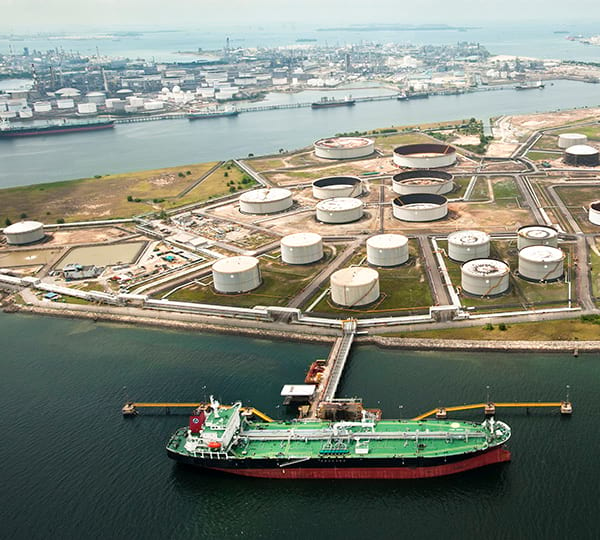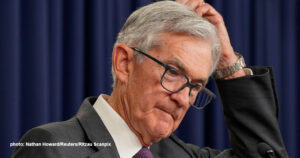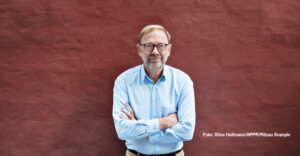I en omfattende analyse konkluderer Pimco, at de kommende år kan blive dystre for investorerne. Disruptions vil accellere, og aktiemarkedet vil ikke blive ved med at udvikle sig løsrevet fra økonomien. Det er sandsynligt, at en dårlig økonomisk udvikling vil slå igennem på aktiemarkederne. Investorerne skal indstille sig på mere volatilitet og på et lavere afkast end hidtil.
Escalating Disruption
PIMCO’s Secular Forum and global team of investment professionals zoomed in on the post-pandemic outlook for the global economy, policy, politics, and financial markets over the next three to five years and discussed the implications for investors’ portfolios. Here’s what we concluded.
Secular Outlook
We concluded that the core of our “dealing with disruption” framework remains intact: We believe investment success over the secular horizon will continue to be defined by being prepared for disruptions from a variety of sources and by actively pursuing the opportunities that arise when volatility occurs.
This is even more important now that markets will have to grapple with the longer-term consequences of the pandemic shock, its propagation, and the policy responses.

Crisis amplifies four secular disruptors
Zooming in on potential disruptions, we concluded that several of the trends that we identified as disruptive in the past are likely to become even more pronounced over the secular horizon:
China’s rise as an economic power that disrupts higher-value-added producers elsewhere in the world and challenges the established geopolitical order dominated by the U.S. is likely to be accelerated by its earlier and stronger rebound from the COVID crisis and its strengthened focus on its strategic plan, which was recently rebranded from “Made in China 2025” to a “dual circulation strategy” focused on cutting its dependence on global markets and technology, while remaining open to international markets (see “Assessing China’s ‘Structural’ Monetary Policy”).
Populism and its close cousins protectionism and nationalism are likely to be fortified by the pandemic recession and its impact on rising inequality along several dimensions, which was one of the focal points of our discussions. Against this background, we considered but eventually dismissed the thesis that we have already seen “peak populism” around the world.
Climate-related risks and their impact on human lives and economic activity became even more apparent and acute this year, focusing attention on “fat tail” catastrophic environmental events.
Investment conclusions
The purpose of the Secular Forum is to identify risks and opportunities, to anticipate long-term trends, and to establish guardrails for our portfolios and priorities as risk managers.
The reality of a low-return environment
What is clear, in spite of ongoing favorable asset market returns this year – during a period of crisis – is that the outlook for asset market returns over the next three to five years is likely to be different from the experience of the past decade.
Starting valuations in bond markets and equity markets make it very difficult to envision the ongoing inflation of asset prices as the byproduct or the intention of policy interventions, including with the best efforts of central banks to offset the effects of future negative shocks.
Given historically low yields and high equity valuations, it makes sense for portfolio managers and asset allocators alike to lower their return expectations rather than stretch too far and extend too far down the quality spectrum in hope of maintaining historical levels of returns.
There is no shortage of examples from history where investors experienced multiyear periods of flat investment returns, or worse. The experience of the past 10 years is not necessarily the guide for the next decade.

We anticipate a broadly range-bound environment for government bond yields will be maintained for much or all of the next three to five years. Central bank policy rates are unlikely to rise for a long period and there is some risk of a shift lower.
We see both downside risks to yields in the event of a broad shift toward negative policy rates and upside risks if the monetary and fiscal efforts lead to a sustained rise in inflation expectations. Indeed, while we see very little upside risk to inflation in the near term, we think that over time it will make sense to hedge against a rise in inflation using Treasury Inflation-Protected Securities (TIPS), yield curve strategies, real estate, and potentially exposure to commodities.
The low yield environment and reach for investment returns may continue to support equity markets. But starting valuations should dim any excessive optimism. Indeed, the long-term history in Japan over decades and the shorter experience in Europe over the past few years show that there is no guarantee of outsized gains for equities over bonds, even in a very low yield environment.
In a period of weak economic activity, we see the potential for the secular rise in profits as a share of GDP to stall or reverse. This could be the result of shifting political and corporate objectives, of re-regulation, or of increased taxation of capital – with the U.S. election an important and immediate harbinger.
We also see risks related to de-globalization and shifts as the result of environment pressures that may lead to stranded assets for the companies that are exposed. ESG (environmental, social, and governance) considerations are increasingly important to our clients, and assessing the impact and importance of these factors is and has long been a core part of our investment process.
Global opportunities
We expect to find good investment opportunities in Europe if the current greater stability of the euro area is maintained or – as active investors – in the event that Europe continues the more familiar pattern of one step forward followed by two steps backward.
A key source of uncertainty is whether the less politicized monetary policy and more cooperation on the fiscal front that we observed at the height of the COVID shock will endure in the face of more country-specific shocks and challenges.
We also expect to find good investment opportunities in Asia, a region that thus far has demonstrated somewhat greater stability during the COVID crisis, including active opportunities for corporate credit selection.
We believe emerging markets generally offer the potential for higher returns than developed countries, given initial valuations, but also the potential for yet more significant disruptions that will lead to a range of winners and losers.

In emerging markets, as with corporate credit, we strongly believe that active management is not a luxury but a necessity, as we seek out compelling return opportunities while managing risks to client portfolios.
With central bank policy rates at or close to what is likely to be their lowest levels, and significant uncertainty in both the short and the medium term over fiscal policy, we expect that exchange rates will serve as relief valves and shock absorbers.
Bad news may indeed be bad news
As well as this secular period being, with high probability, a period of lower investment returns, it is also likely to be a period of higher volatility of those returns. We as investors need to be prepared.
In the earlier part of the secular horizon, uncertainties over the course of the pandemic and the shape of the recovery raise the prospect of higher economic and market volatility. While central banks will no doubt work very hard, it is not clear that they will be able to maintain their roles as volatility suppressors in chief.
We see little reason to be confident that the pattern we have observed in the past 10 years of “bad news is good news” – where markets anticipated central bank responses that dominated macroeconomic realities – will continue.
Over the next three to five years it is quite likely that bad news on the macroeconomic front will turn out to be bad news for risk assets.
While it is not possible to forecast the longer-term outlook with anything approaching certainty, we see the risk of fatter tails to the probability distribution in what may be a period of ongoing experimentation in both monetary and fiscal policy.
Indeed, uncertainty over the longer-term impact of the shift in the balance of monetary and fiscal policy gives rise to a broad range of potential macro and market outcomes over time and across countries.
The prospect of a more difficult investment environment and the potential for a rise in economic and market volatility mean that we will put significant emphasis on capital preservation and avoiding the risk of exposure to absolute losses.
We also think this is likely to be an investment environment that calls for a patient approach, a global approach, and a flexible approach to utilize as wide as possible a set of investment instruments and pursue attractive risk-adjusted opportunities across jurisdictions.
A lower return environment means that alpha is likely to be an even more important part of total return. Active managers who can reliably add alpha to returns over the cycle can help clients navigate a more difficult investment environment.
At PIMCO, we will work hard, deploying all of our global resources and specialist expertise across sectors, to generate alpha, manage risk, and assist our clients as we all continue to deal with disruption.








